RECIPES
EGG PASTA Pasta all’uovo
For flat shapes like pappardelle, fettuccine, lasagna sheets, or stuffed pasta
Serves 1 person, scale up using this ratio with 1 egg per person.
100 grams of 00 flour*3/4 of a cup of this flour is ROUGHLY 100g, use a scale if you can
1 egg (about 60g of liquid) if you have smaller eggs you may need to incorporate a little water or an extra yolk
1/4 tsp of olive oil
*00 Flour or doppio zero can be found easily online and in some grocery stores, a common and reliable brand is Caputo. Try not to use all purpose flour.
Start by making a wide and shallow well, fountain, or fontana of the flour. In the hole of the well crack your eggs and add your olive oil (if using). Begin by beating the eggs until they are homogenous. Then using a fork or your fingers stir around the perimeter of the eggs to incorporate the flour bit by bit.
Once you have a thick sludge in the middle, incorporate the rest of the flour and knead thoroughly for 15-30 minutes until it is densely elastic and smooth but not tacky. It really does take a while. Sometimes the dough will stop accepting flour and you will have some left over. Don’t force it, if you need to leave flour and crumbs behind to keep the dough moist enough that is fine. If you find your dough to be too dry or crumbly, wet your hands occasionally as you knead to incorporate more. If it is too wet and sticky, sprinkle more flour on your surface and continue to knead the flour into your dough. Try to give it a chance to come together before adding any flour as gluten formation usually helps with stickiness. Then let it rest at room temperature for 30 minutes in plastic wrap or under a bowl. This resting period will allow the gluten to relax and the flour to fully hydrate.
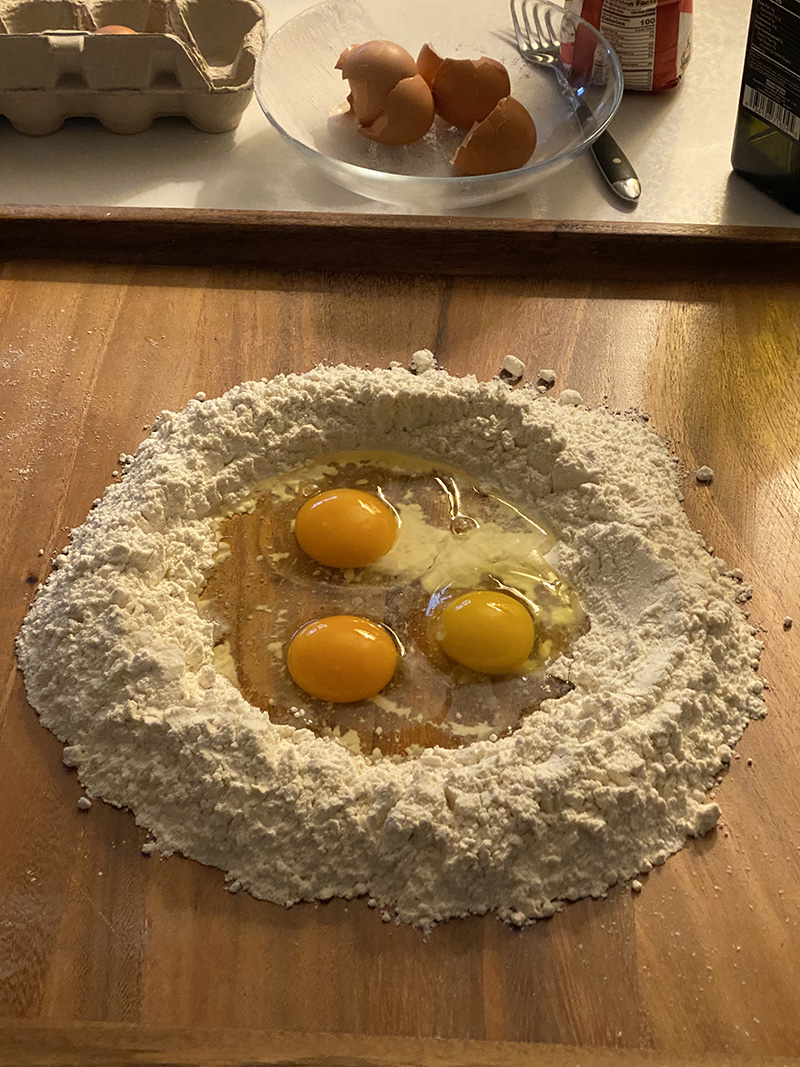
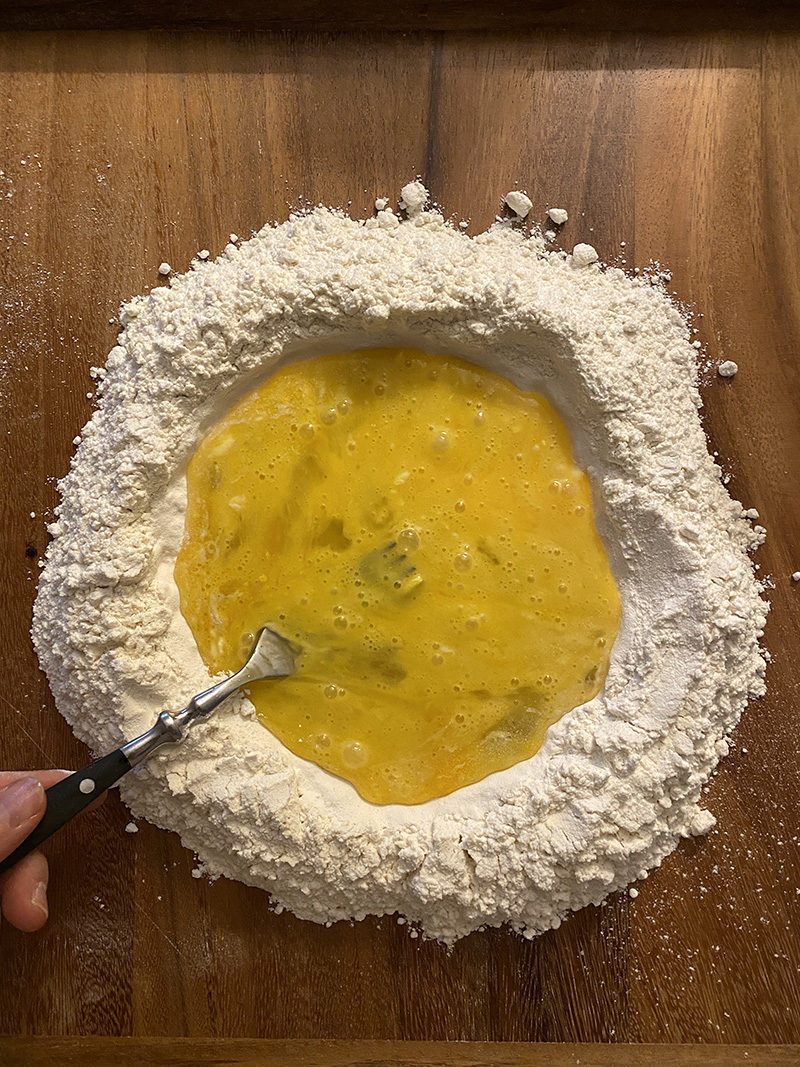
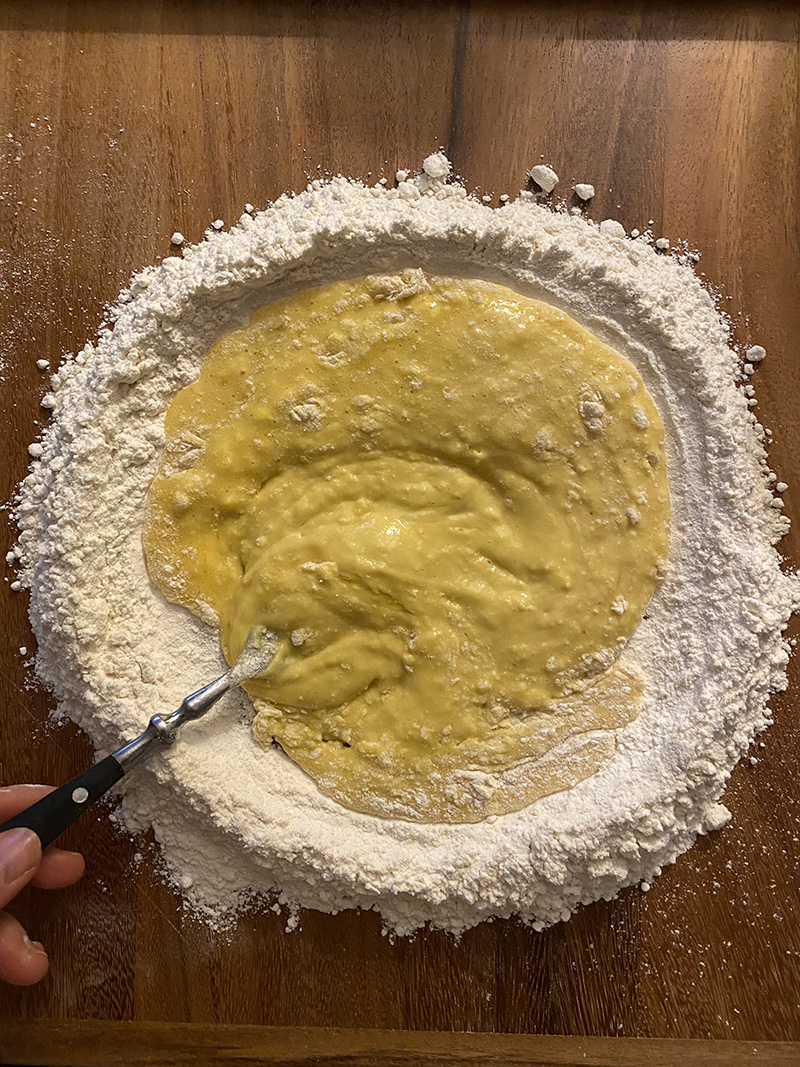

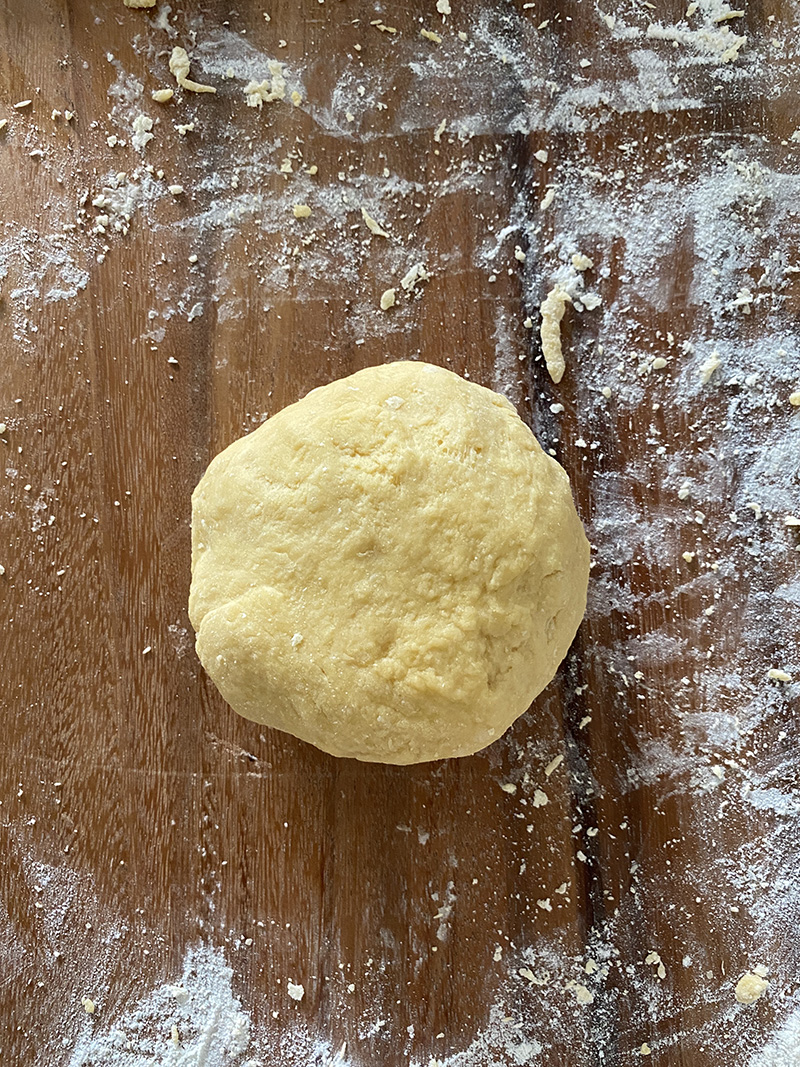
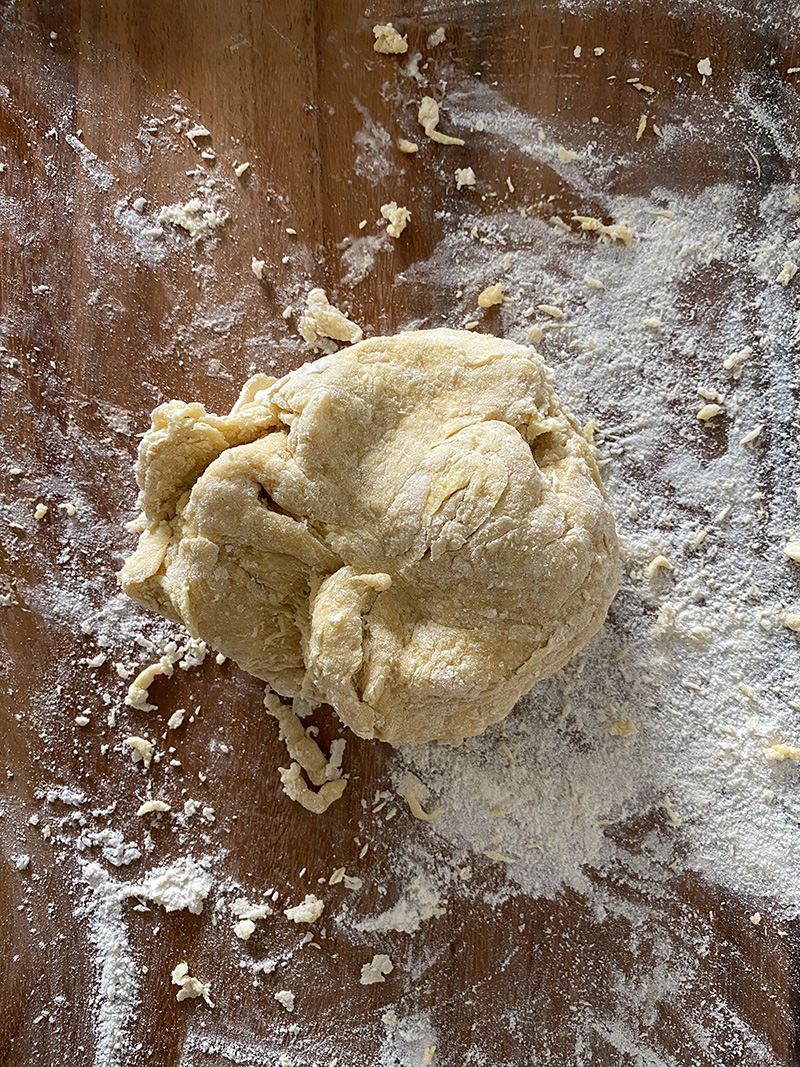
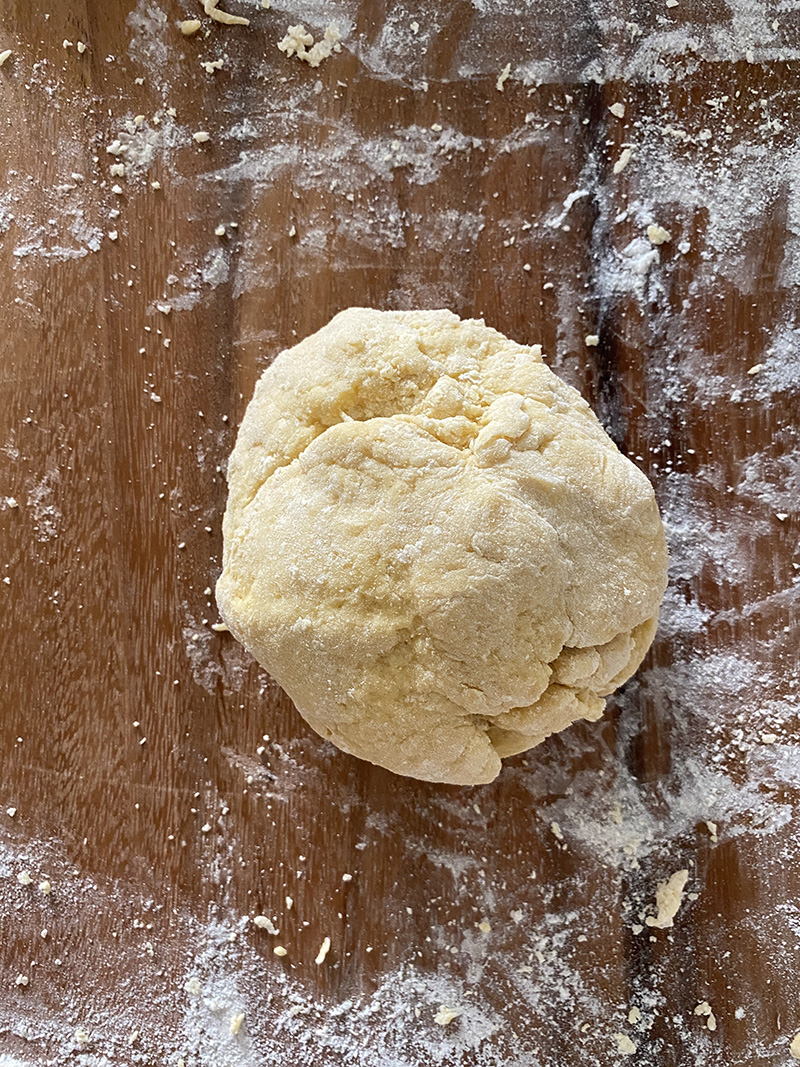


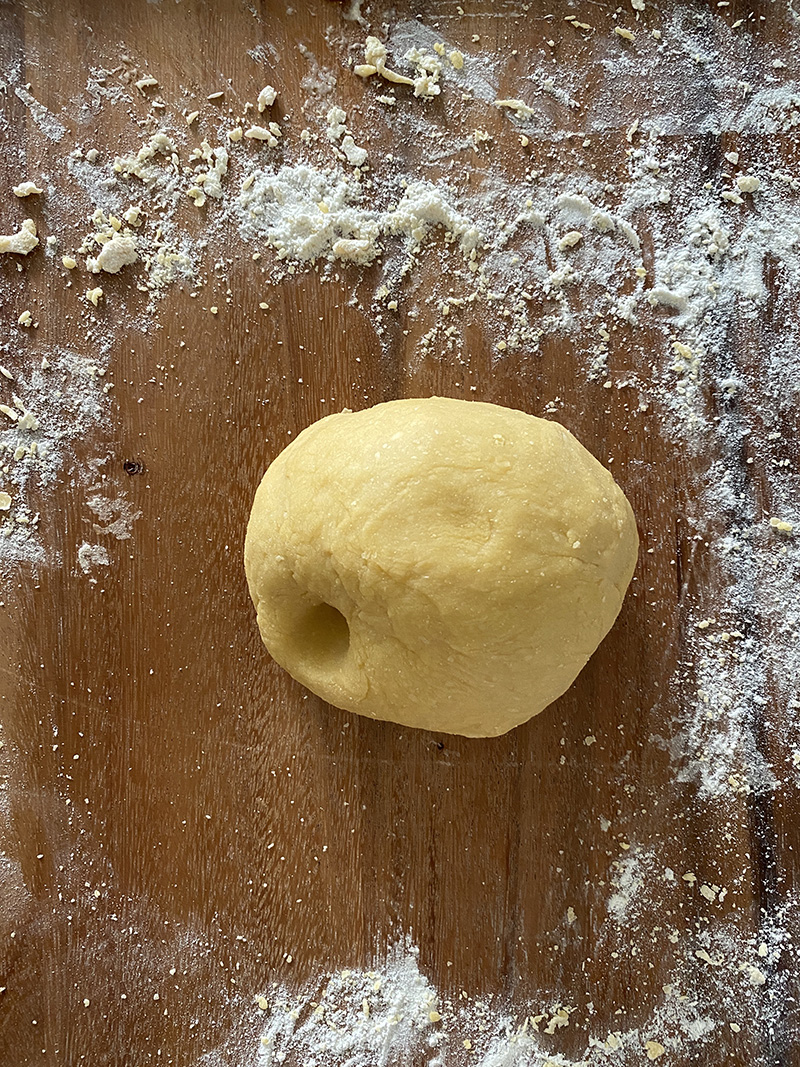

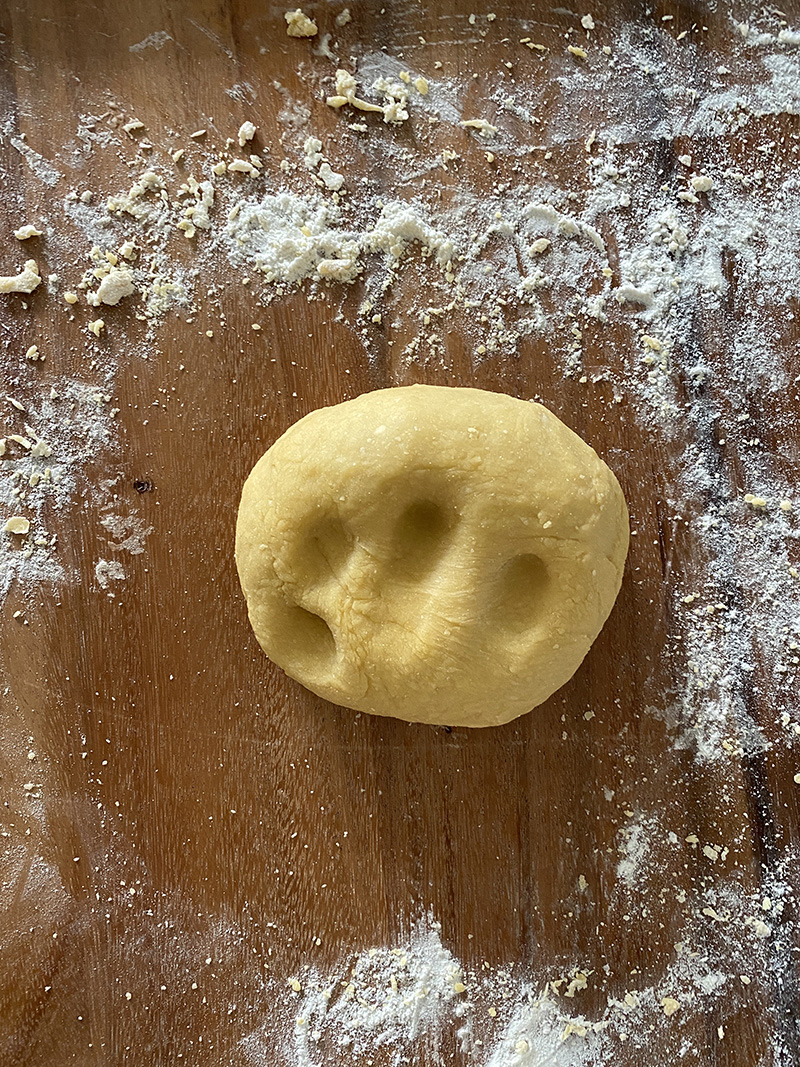
Great photos of the well technique can also be found here and in this video.
TO ROLL OUT BY HAND
Use a rolling pin or a wooden dowel (or broom handle!) like this.
Once rested you can being rolling out your dough. It should be VERY thin. Millimeters thin. The thickness of a cotton bed sheet. A nonna would probably tell you it needs to be thin enough to read the newspaper through. If you use it for stuffed pasta be sure to press any edges you double-up to keep them from getting too thick. People often want to start with stuffed pasta but quickly find it can be hard to make them light and delicate without a very thin dough to start with. A machine is best for this but if you are persistent with rolling and strategic in what shape you choose, you can make it work.
TO ROLL OUT WITH A MACHINE
If you are using a mechanized pasta roller see the below and these images.
Once the dough has rested, divide the dough into smaller pieces so they are easier to handle as the sheets can get quite long. Keep pieces covered until you start rolling them out to keep them moist. Then take one of the pieces and flatten it into a rectangle that will fit in the pasta machine. Flour the machine rollers and the dough rectangle lightly and roll it through at the widest setting (usually that is labelled at #1) Then fold it in on itself to square off the edges and run it through again at the same wide setting. Run it through the next smaller setting (without folding this time), and continue slowly decreasing until you reach the second to last or last setting, it depends on how thin of a pasta you want. A light dusting of flour at regular intervals will prevent sticking.
At this point you can cut the sheets into shapes or strips or you can use this dough for filled pasta or layered dishes. Keep the pasta on a floured tray to keep from sticking. Coarse semolina is best as it will sink when you boil the pasta rather than sticking to your dough, but whatever flour you’re using is fine. Freeze extra pieces or scraps for future use! Boil in water salted like the ocean for 2-5 minutes depending on the shape and size.
SHAPES TO TRY
Tagliatelle / tajarin
Farfalle
Mandilli di Saea
Cestini
Cappellacci
Casoncelli
Lasagna
Maltagliati
Etc
.....
EGGLESS PASTA pasta senza uova
For orecchiette, cavatelli, and other commonly dry pasta
Serves 4-6 people
400 grams semola di grano duro rimacinata* 3/4 of a cup of this flour is ROUGHLY 100g, use a scale if you can
200 ml lukewarm water
pinch of salt
*Semola di grano duro rimacinata (Durum wheat flour) can be found online and in some specialty stores, often found made by Caputo
Start by making a wide and shallow well, fountain, or fontana of the flour. In the hole of the well pour your water and salt, mixing so the salt dissolves in the water. Then, using a fork or your fingers, stir around the perimeter of the water to incorporate the flour bit by bit. Once you have a thick sludge in the middle incorporate the rest of the flour and knead thoroughly for 15-30 minutes until it is elastic (the texture of your earlobe), smooth but not tacky, and lighter in color, almost a little aerated. You can’t rush it. If you find your dough to be too dry or crumbly, wet your hands occasionally as you knead to incorporate more water. If it is too wet or sticky, sprinkle more flour on your surface and continue to knead the flour into your dough.
Then let it rest at room temperature for at least 30 minutes in plastic wrap or under a bowl. This resting period will allow the gluten to relax and for the flour to fully hydrate. Photos of the technique can also be found here.
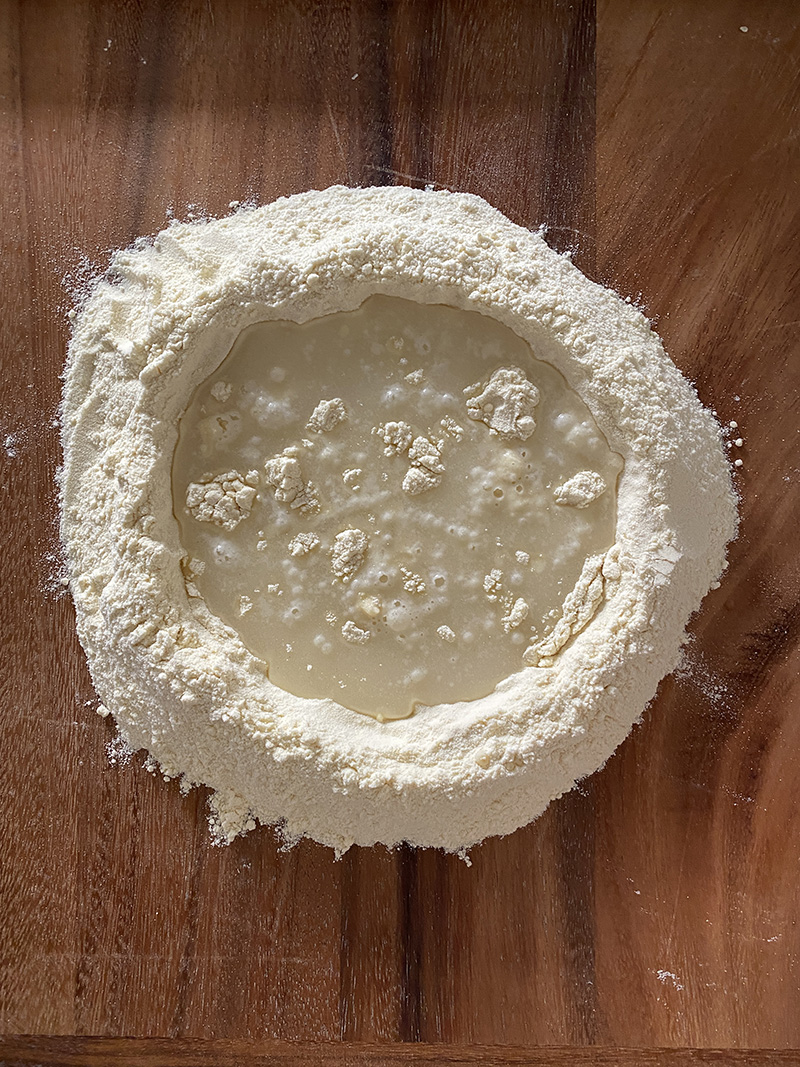
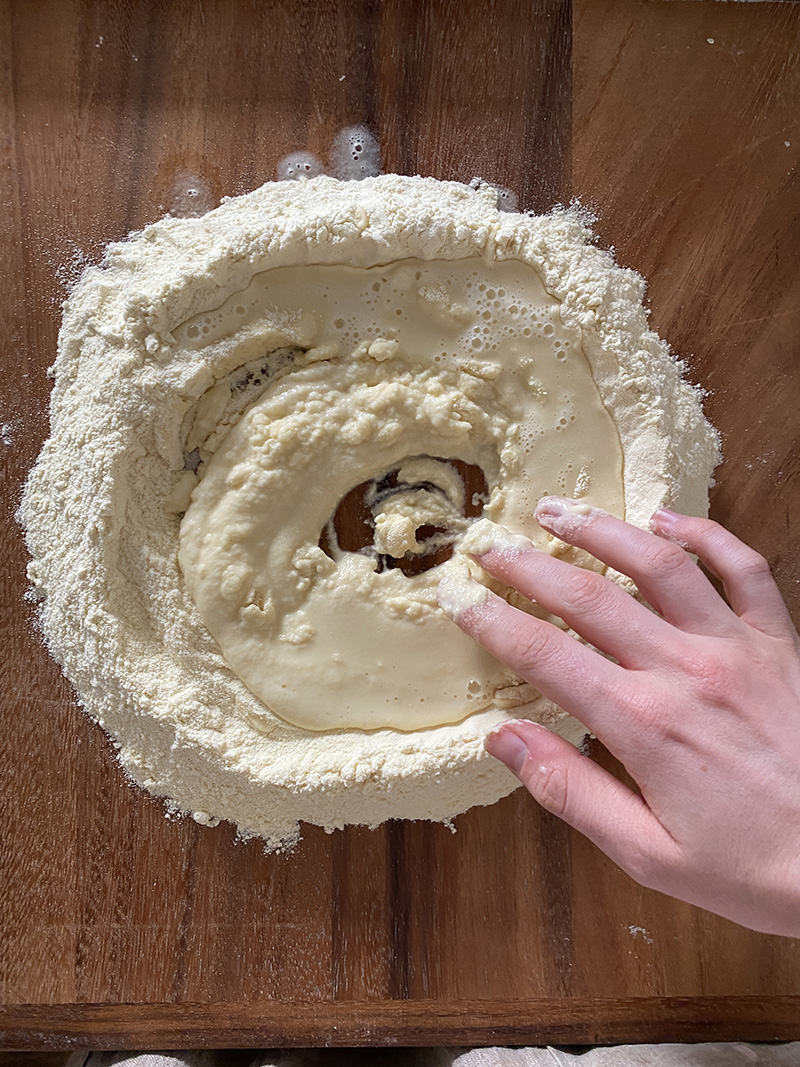
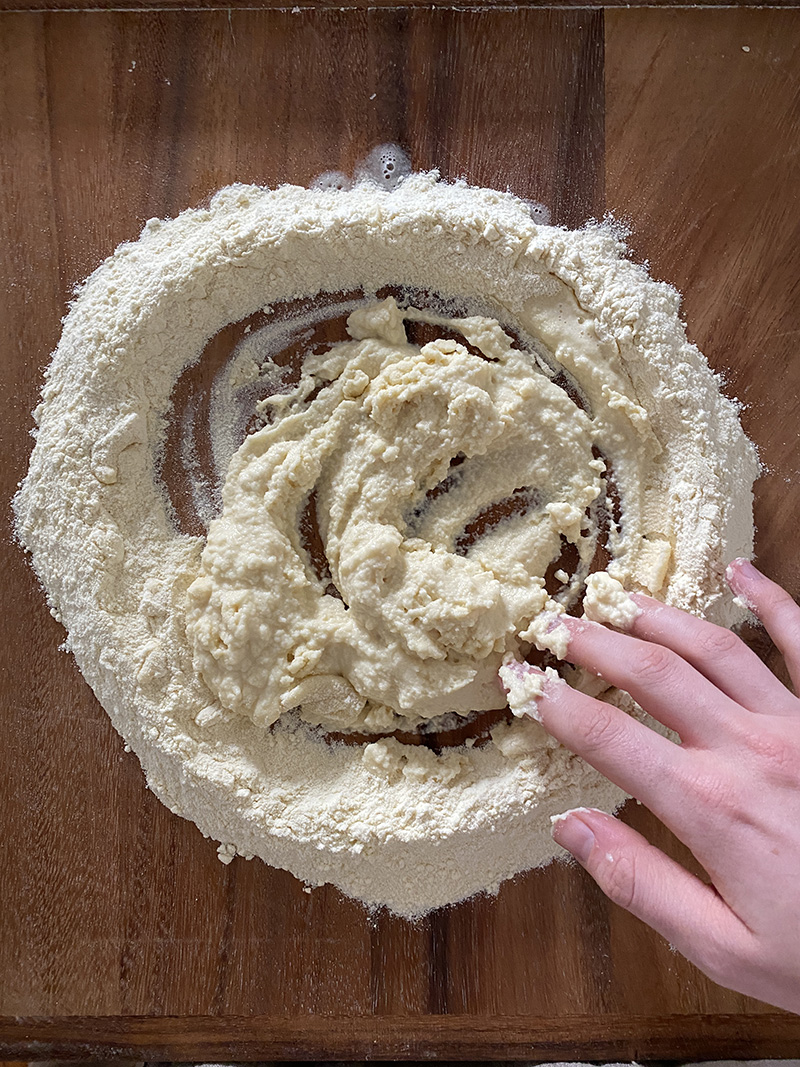
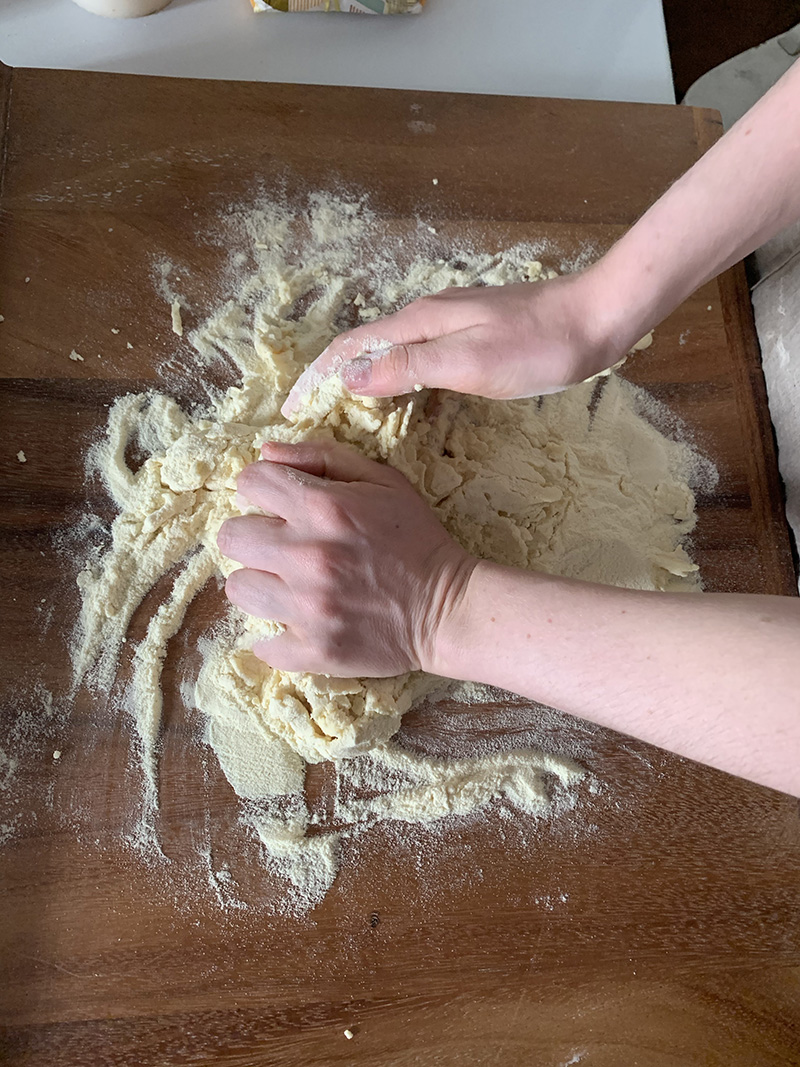

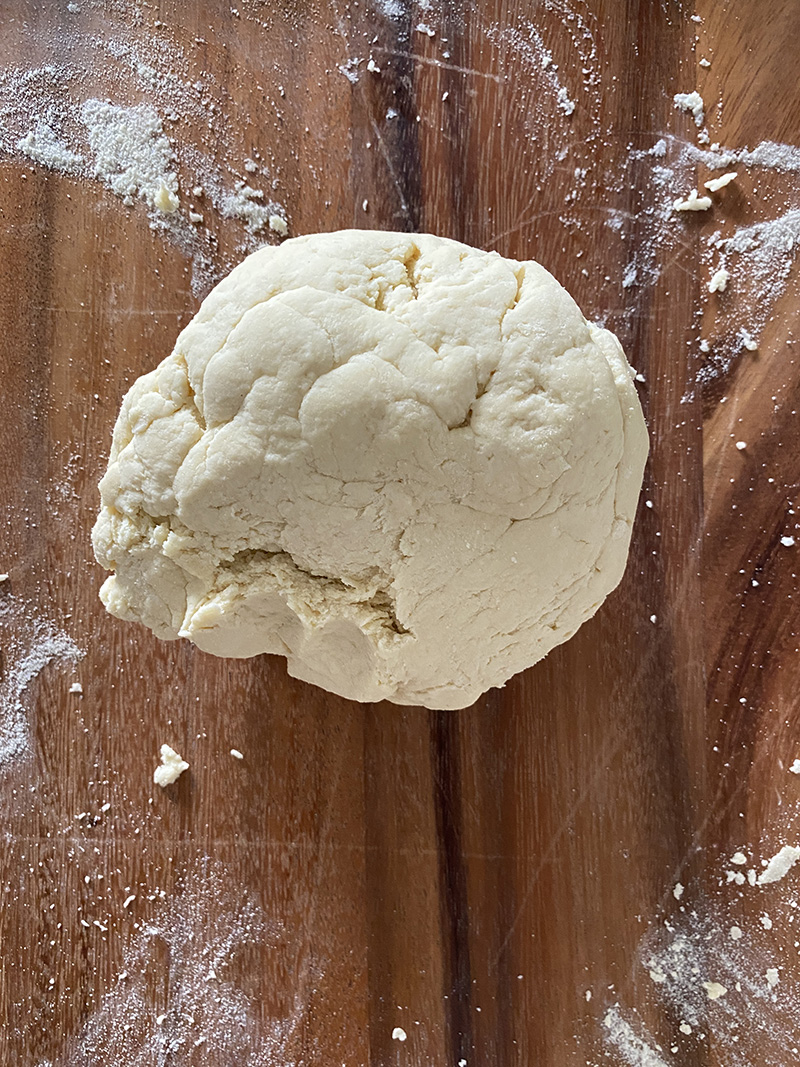
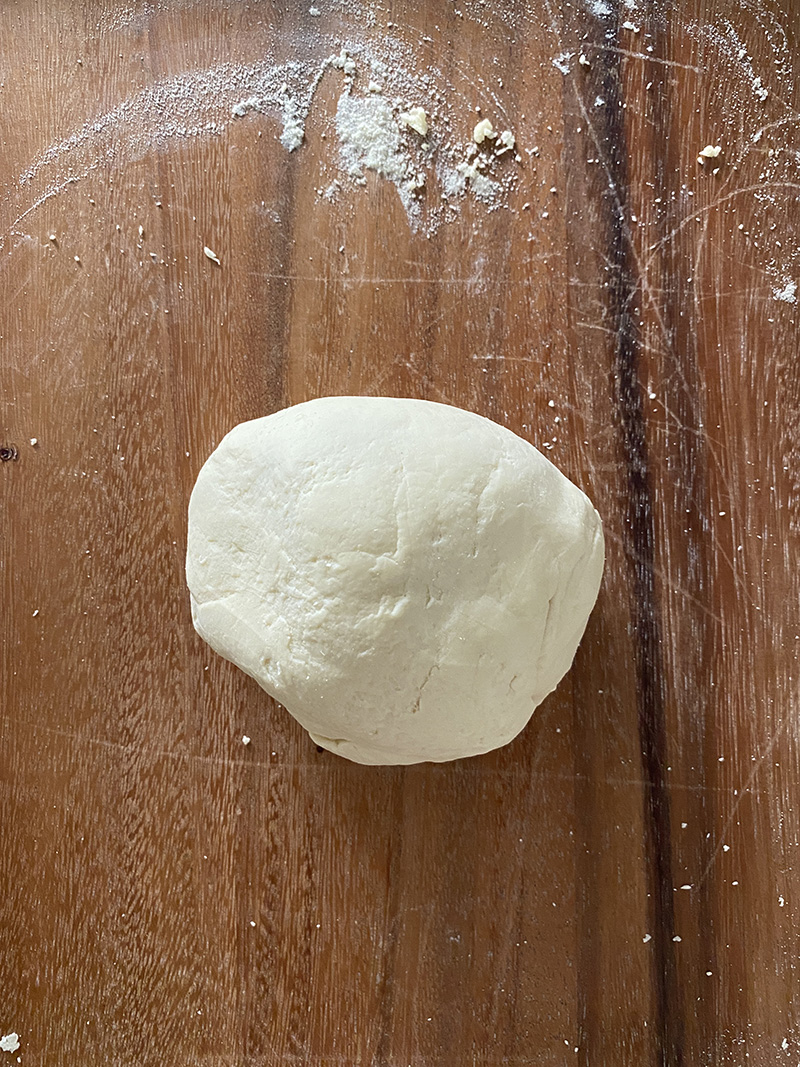
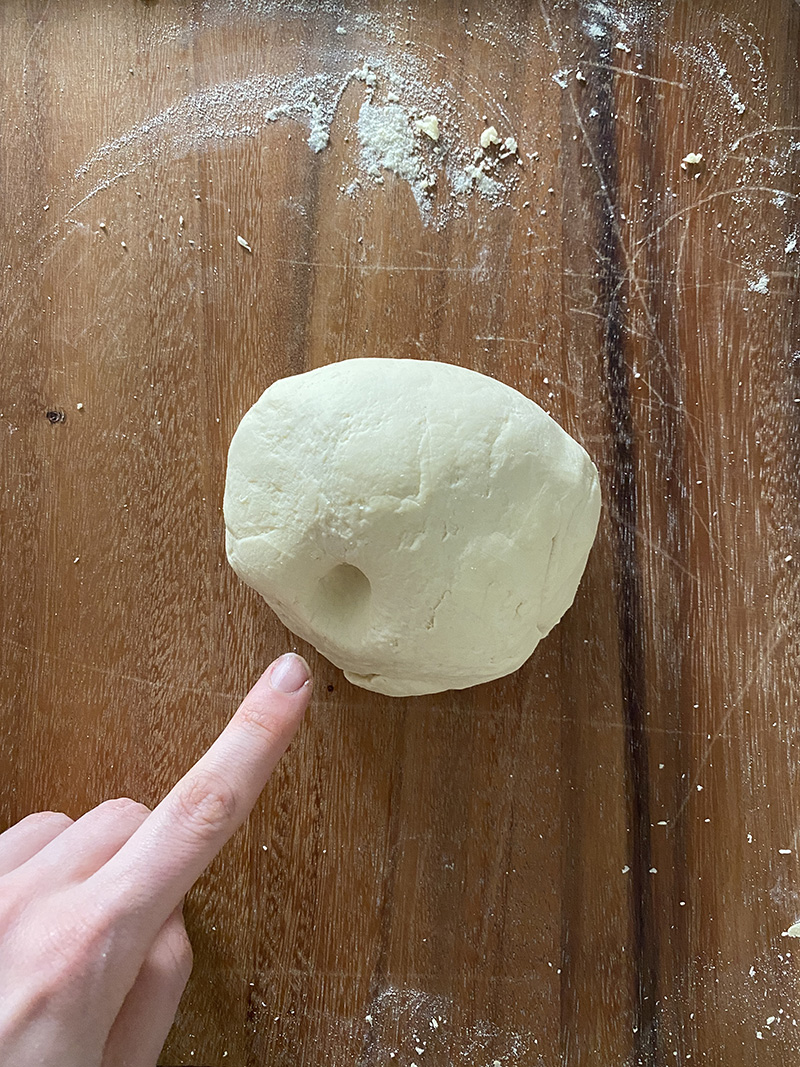
Shaping of this dough is easy and usually done by hand or aided by a utensil like a butter knife or skewer. If you have a pasta extruder this dough is ideal. It is a great dough for a shape with more dimension that has nooks and crannies to hold sauce. It can be almost anything as long as it is not so oversized/thick (keep it under a centimeter) that when it is boiled the exterior will cook faster than the interior. Keep the pasta on a floured tray to keep from sticking (coarse semolina is best but whatever flour you’re using is fine). And freeze extra or scraps for future use! Boil in water salted like the ocean for 2-5 minutes depending on the shape and size.Once they float they are usually done.
SHAPES TO TRY
A whole mix at once
Cavatelli
Orecchiette (these are basically cavatelli turned inside out)
Lorighittas
Maritati
ricchie e macarruni
Torchi
